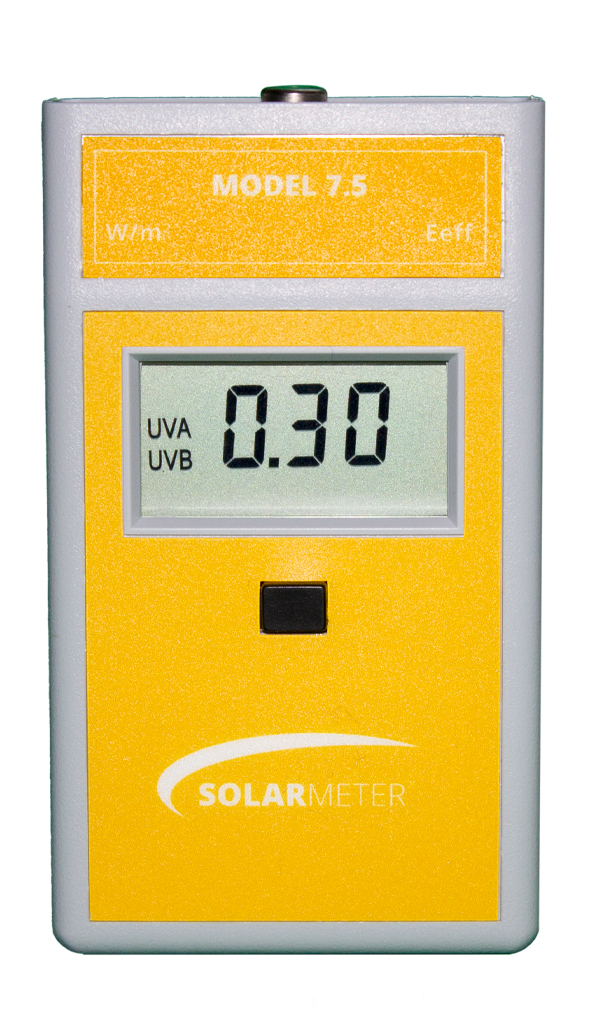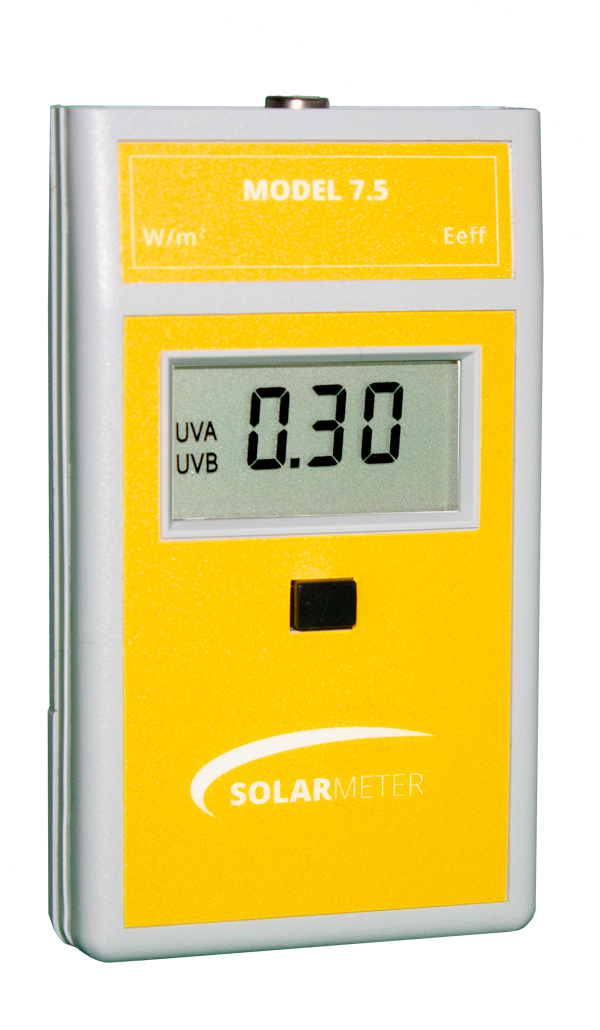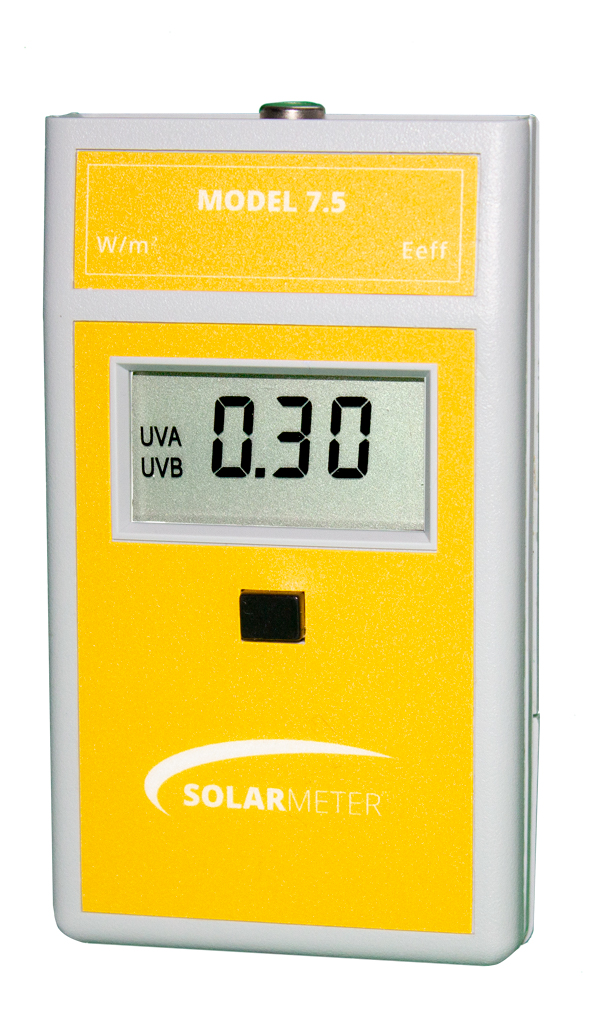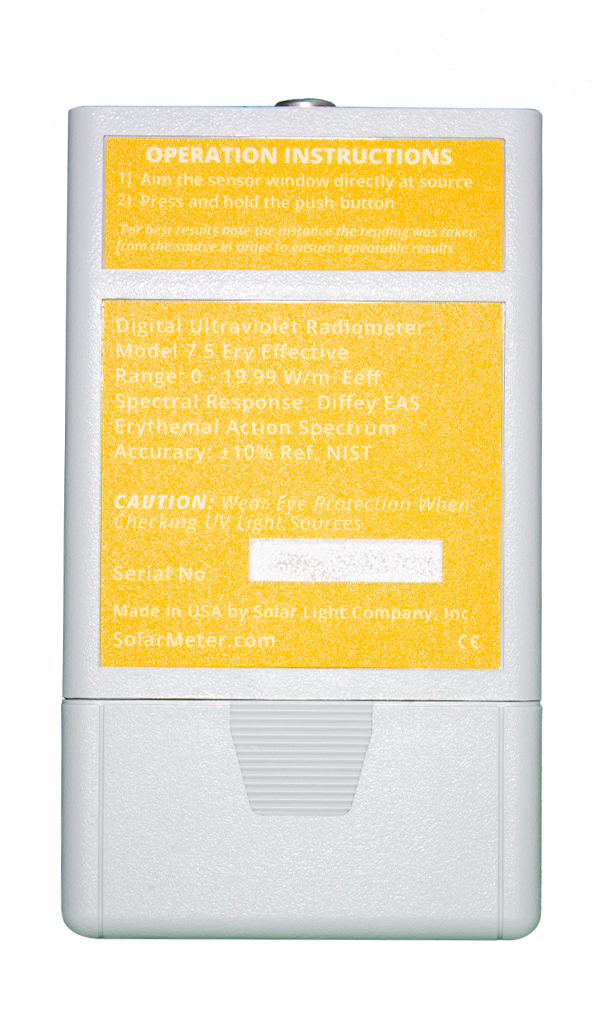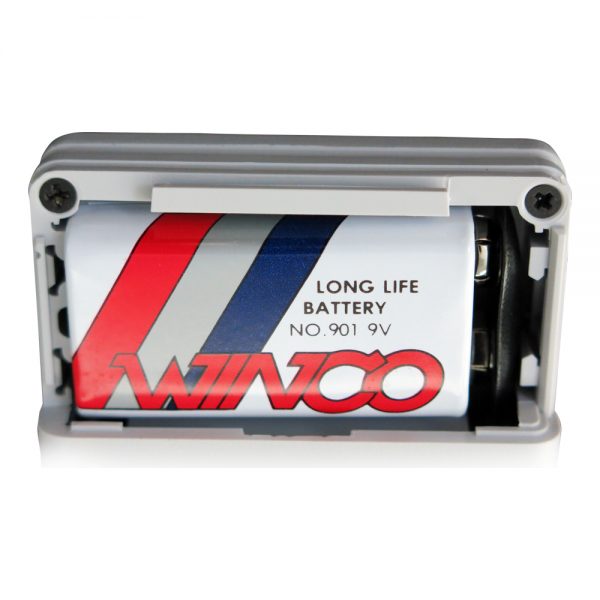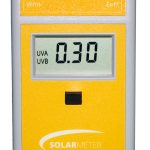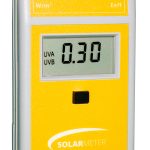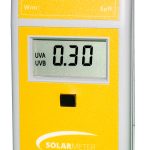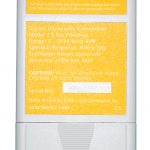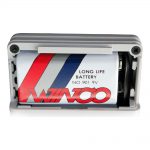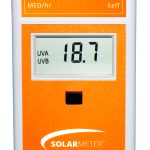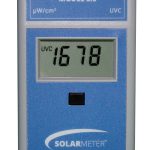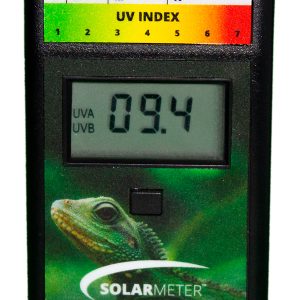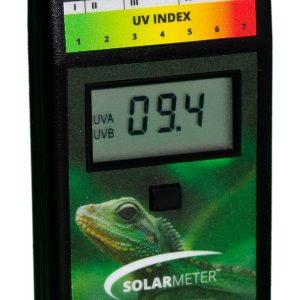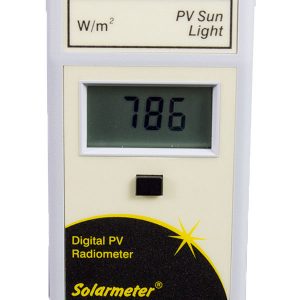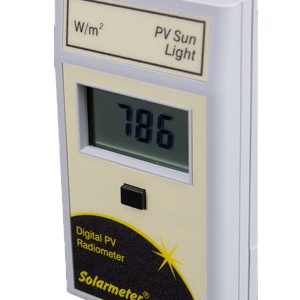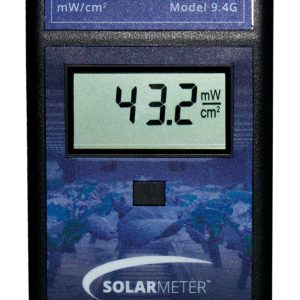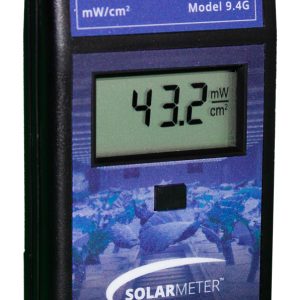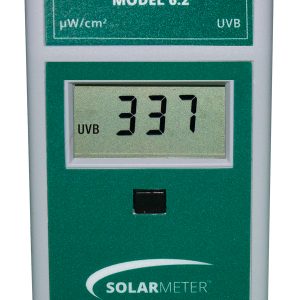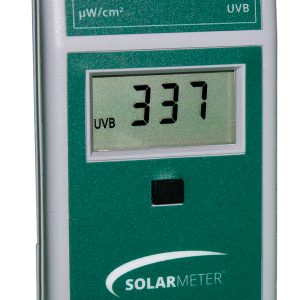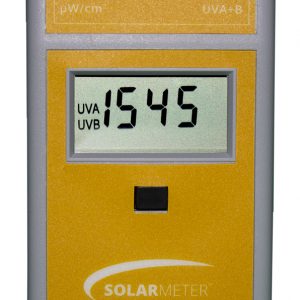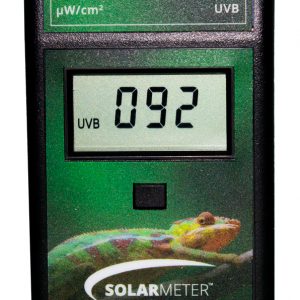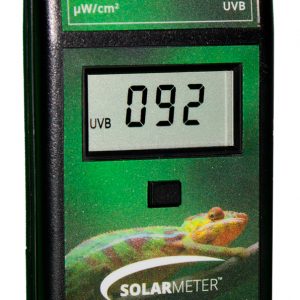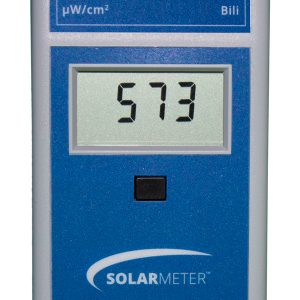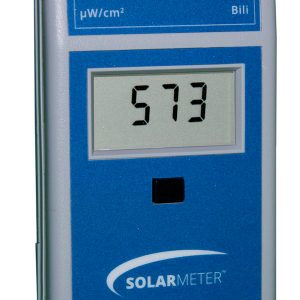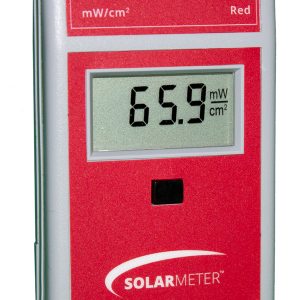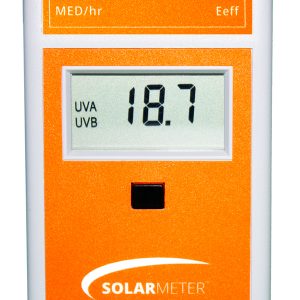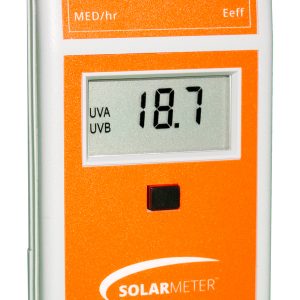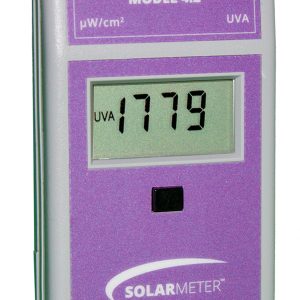Solarmeter® Model 7.5 UV In W/m2 Ery
$249.00
Features:
- Compact, Handheld, and Durable
- Simple Single-Button Operation
- NIST Traceable Accuracy
- LCD Display
- Made In USA
Applications:
- Monitoring UV Lamp Intensity and Aging
- Monitoring Instantaneous UV in W/m2 Ery
- Monitoring Tanning Lamp Output Per Regulations
- Measuring Solar Intensity in W/m2 Ery
- Testing Window Tint / Film Transmission
- Testing Acrylic Shield Transmission
- Testing Eyewear UV Blocking Capabilities
- Description
- Additional information
- Videos
- Downloads
Description
| Solarmeter® Specifications | |
| Model | 7.5 |
| Irradiation Range | 19.99 W/m2 Ery |
| Response | 280-400 nm Diffey Erythermal Action Spectrum |
| Resolution | 0.01 W/m2 |
| Conversion Rate | 3.0 Readings/Sec |
| Display | 3.5 Digit LCD |
| Digit Size | 0.4 (in) / 10.2 (mm) high |
| Operational Temperature | 32°F to100°F / 0°C to 37.8°C |
| Operational Humidity | 5% to 80% RH |
| Accuracy | ±10% REF.NIST |
| Dimensions | 4.2L x 2.4W x 0.9D (in) / 106.7L x 61W x 22.9D (mm) |
| Weight | 4.5 (oz) / 128 (g) Including Battery |
| Power Source | 9-Volt DC Battery |
| Lens | UV Glass |
| Diffuser | Teflon |
| Detector | SIC/IF Photodiode |
| Agency Approval | CE Mark |
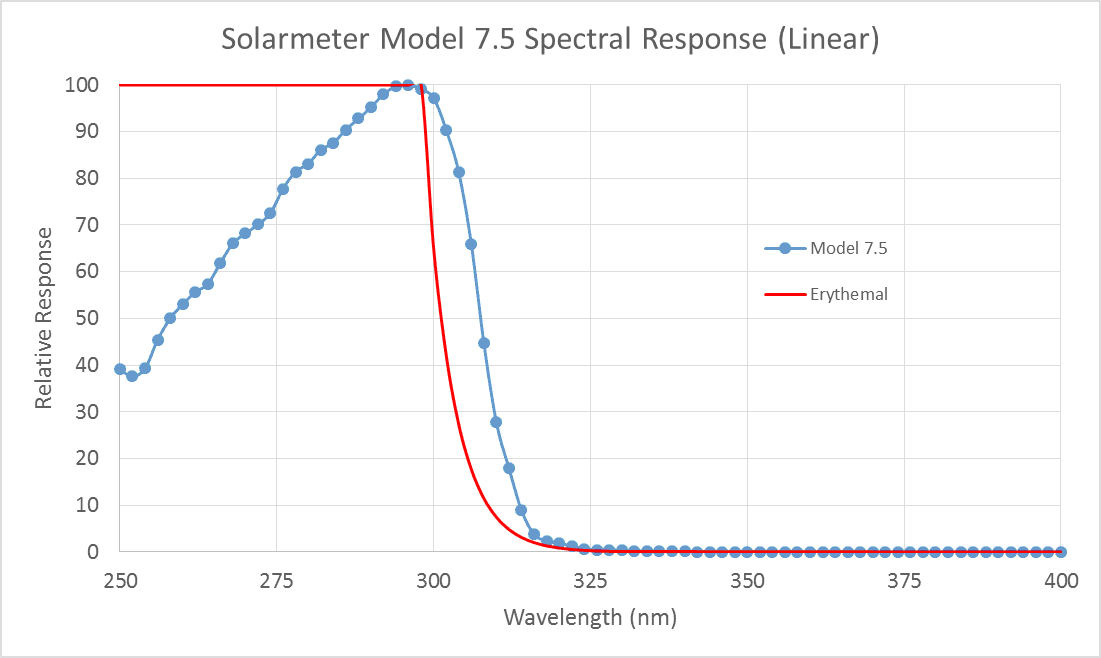
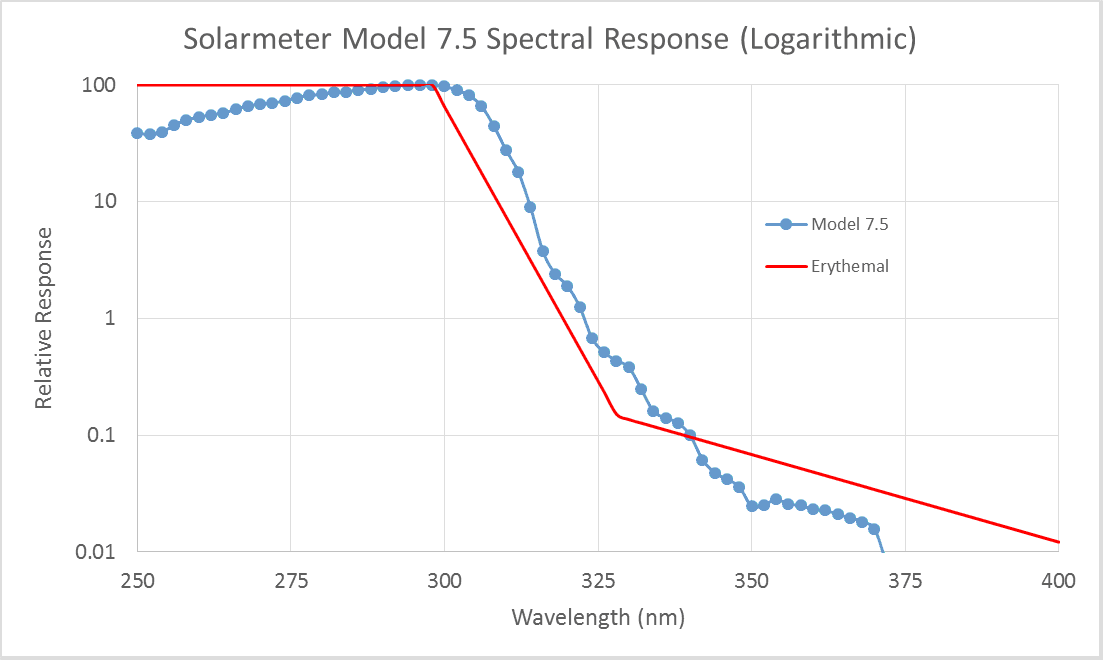
Sensor/Detector
Silicon Carbide (SIC) Photodiode packaged in hermetically sealed UV glass window cap. Interference filter blocks UV above erythermal response as show on the Spectral Sensitivity Graph.
Operation
To operate your Solarmeter, aim the sensor window located on the top panel of the meter directly at a UV source. Press and hold the push-button switch on the face of the meter. For best results take note of the distance the reading was taken from the UV source in order to ensure repeatable results. Battery operation voltage is viable from 9V down to 6.5V. Below 6.5V, the numbers on the LCD display will begin to dim, indicating the need for battery replacement. Under typical service load, a standard 9V battery will last approximately 2 years.
Proper Usage of Solarmeter® Ultraviolet Radiometer Radiometer for Lamp Tests
- Wear UV-block eye protection when checking UV lamps.
- Allow lamps to warm-up prior to taking readings (at least 5 min).
- Hold sensor close to lamp or acrylic to measure individual lamp Eeff intensity. Hold sensor at 25 cm above bench with canopy closed for body position reading.
- When checking aging of lamps, keep measuring distance and locations constant.
- Lamps should be replaced when output drops to about 70% of their original (new) readings. Keep track of hours vs. readings on a chart.
- If unsure of what original new values were, replace two adjacent lamps with new ones of the same kind and compare old ones.
- When checking acrylic transmission, take reading through acrylic; then remove acrylic and hold meter sensor at approximately the same distance from lamp as the acrylic shield was located. If acrylic blocks much UV it should be replaced.
- Do not subject the meter to extremes in temperature, humidity, shock or dust.
- Use a dry, soft cloth to clean the intrument. Keep sensor free of oil, dirt, etc.
Additional information
| Weight | 0.5 lbs |
|---|---|
| Dimensions | 7 × 3.5 × 2.5 in |
| Sort order |

